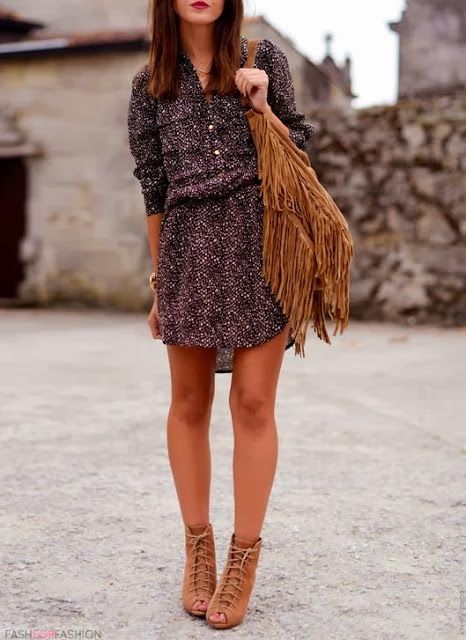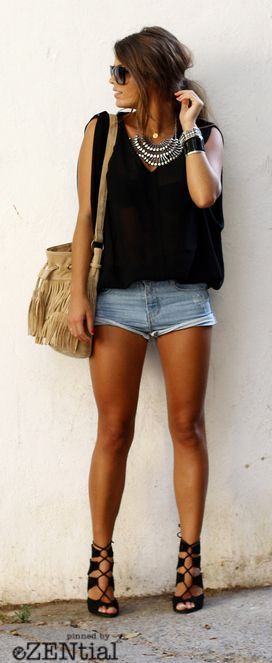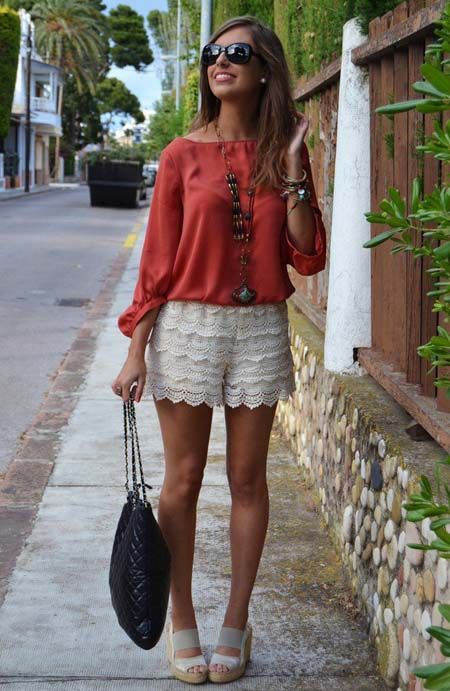
Table of Contents
Introduction
Style Revival Fashion is more than clothing; it’s an art form, a medium of self-expression, and a reflection of societal evolution. Today’s fashion is a fascinating blend of nostalgia, innovation, and diversity, leading to a dynamic new era of style. With trends constantly evolving, women’s fashion has entered a phase where the past meets the future, giving rise to fresh, transformative looks. In this blog, we’ll explore how this new fashion era is shaping women’s wardrobes and influencing global trends.
The Era of Versatility
Women’s fashion today is defined by versatility. Designers are creating pieces that seamlessly transition from casual to formal settings, catering to the modern woman’s dynamic lifestyle. For instance:
Power suits have evolved into versatile ensembles with relaxed tailoring. They can be styled as office wear or Style Revival deconstructed for a chic, casual vibe.
Day-to-night dresses are gaining popularity, featuring neutral tones and fabrics that adapt to various occasions.
This trend reflects a shift in consumer priorities, where practicality is as crucial as aesthetics.
The Nostalgia Factor: Retro Redux
One of the most captivating aspects of the new fashion era is the revival of past decades. From 90s grunge to 70s Style Revival bohemian, old-school fashion trends are making a comeback with a modern twist:
Denim mania: High-waisted jeans, baggy fits, and overalls are reminiscent of the 80s and 90s. Updated with sustainable Style Revival fabrics, they resonate with today’s eco-conscious shoppers.
Bold prints and patterns: Polka dots, paisley, and retro florals are reappearing in contemporary designs, proving that some styles are truly timeless.
Accessories revival: Bucket hats, chokers, and oversized sunglasses are no longer relics of the past but must-haves for the modern wardrobe.
This trend taps into the emotional appeal of nostalgia while remaining relevant to current fashion sensibilities.
The Rise of Personalization
Fashion is becoming more inclusive and personal. Women are no longer confined to societal norms but are Style Revival encouraged to embrace individuality. Key developments include:
Customizable clothing: Brands are offering options for customers to personalize their outfits, from fabric choices to unique prints.
Mix-and-match culture: The new era promotes styling diverse pieces together, such as pairing a Style Revival bold-patterned top with neutral trousers or layering prints for an eclectic look.
Size inclusivity: Fashion is embracing diversity with expanded size ranges, ensuring everyone can find pieces that fit beautifully.
Sustainability: The New Luxury
Sustainability has become a cornerstone of modern fashion, with eco-friendly materials and ethical production processes taking center stage. Women are choosing quality over quantity, with a focus on longevity and minimal environmental impact. Style Revival Notable examples include:
Recycled fabrics: Brands are using materials like recycled polyester and organic cotton to create stylish yet sustainable pieces.
Capsule wardrobes: A minimalist approach is trending, encouraging women to invest in versatile basics that can be styled in numerous ways.
Secondhand shopping: Thrifting and vintage shopping are now mainstream, celebrating uniqueness and reducing waste.
This sustainable approach aligns fashion with conscious consumerism, reflecting a broader cultural shift.


The Influence of Technology
Technology is reshaping how women interact with fashion, from shopping to styling. Key advancements include:
Virtual try-ons: AR technology enables customers to try on outfits virtually, reducing the guesswork of online shopping.
AI styling assistants: Apps provide personalized outfit recommendations based on user preferences, body type, and current trends.
Smart fabrics: Wearables with temperature control or UV protection are merging technology with functionality, catering to the needs of the modern woman.
The integration of tech in fashion has streamlined the shopping experience, making it more interactive and convenient.
Cultural Fusion in Fashion
Globalization has brought a beautiful fusion of cultures in women’s fashion. Designers are drawing inspiration from diverse traditions to create unique pieces that celebrate heritage and innovation. For example:
Indian-inspired prints like paisley and block prints are becoming staples in international fashion.
African motifs are being incorporated into contemporary silhouettes, showcasing bold, vibrant patterns.
Japanese minimalism is influencing global trends with clean lines and understated elegance.
This cultural amalgamation is fostering a deeper appreciation for global artistry in the fashion industry.
Athleisure: The Dominance Continues
Athleisure, a trend that blends comfort with style, has become a staple in women’s wardrobes. From yoga pants to sporty crop tops, this genre of fashion prioritizes ease without compromising aesthetics.
Matching sets: Coordinated athleisure sets are taking over casual outings and even work-from-home wardrobes.
Sneaker culture: Women are embracing sneakers as a versatile accessory, pairing them with everything from jeans to dresses.
Luxury athleisure: High-end brands are integrating technical fabrics into luxury designs, bridging the gap between comfort and sophistication.
Athleisure’s enduring appeal lies in its adaptability, reflecting the evolving lifestyles of modern women.
Accessories: The Statement Makers
Accessories are becoming central to women’s style, transforming simple outfits into bold statements.
Oversized jewelry: Chunky necklaces, earrings, and bangles are back, adding drama to minimalistic looks.
Layering: Stacking rings, bracelets, and necklaces is trending, offering a playful and personalized touch.
Functional bags: From crossbody bags to tote bags, functionality meets fashion in the latest designs.
Statement accessories allow women to experiment with their looks without overhauling their entire wardrobe.


Seasonless Fashion
The traditional concept of seasonal fashion is evolving, with designers focusing on pieces that transcend specific times of the year.
Layer able pieces like lightweight jackets and cardigans are perfect for any season.
Neutral palettes: Earthy tones and soft hues are becoming staples, offering versatility across seasons.
Year-round fabrics: Materials like denim and cotton are being used innovatively to suit varied climates.
Seasonless fashion reflects a pragmatic approach, aligning with consumers’ desire for sustainable and functional wardrobes.
Future Directions in Women’s Fashion
Looking ahead, the new fashion era is poised to embrace even more groundbreaking trends:
Gender-fluid fashion will continue to rise, challenging traditional gender norms.
Digital fashion will gain traction, with virtual outfits designed for the metaverse.
Bio fabricated materials like lab-grown leather and silk will redefine sustainable luxury.
These developments promise an exciting, inclusive, and innovative future for women’s fashion.
Style Revival: The New Fashion Era
The new fashion era is a blend of nostalgia, innovation, and inclusivity, redefining women’s style. Today’s trends prioritize versatility, sustainability, and individuality, allowing women to experiment with bold prints, gender-neutral designs, and cultural fusions.
Key Highlights:
- Nostalgic Comebacks: Retro styles like 90s denim, bold prints, and oversized accessories return with modern updates.
- Sustainable Choices: Women embrace eco-friendly fabrics, capsule wardrobes, and secondhand shopping to reduce their environmental impact.
- Cultural Fusion: Global influences such as Scandinavian minimalism, Korean streetwear, and Middle Eastern opulence enrich fashion.
- Digital Influence: AR try-ons, virtual clothing, and NFT fashion are reshaping how women shop and style.
- Athleisure & Comfort: Sporty yet chic athleisure remains dominant, emphasizing comfort without compromising style.
- Personalization & Inclusivity: Customizable clothing, size-inclusive Style Revival designs, and mix-and-match styles empower women to express individuality.
This era celebrates creativity, technology, and sustainability, offering women endless possibilities to define their unique style. Fashion isn’t just about trends anymore—it’s a powerful form of self-expression.


Key Trends of the New Fashion Ear
Nostalgia Meets Modernity
Fashion revivals from the 70s, 80s, and 90s dominate runways and streetwear, reimagined for contemporary tastes. High-waisted jeans, bold florals, chokers, and bucket hats are making a grand comeback with fresh twists like sustainable fabrics and updated silhouettes.
- Sustainability as a Priority
Women are moving towards eco-conscious fashion by investing in capsule Style Revival wardrobes, thrifting, and choosing brands that prioritize recycled materials and ethical production. Sustainable fashion aligns with the modern consumer’s values of quality and longevity over fast, disposable trends. - Global Cultural Fusion
Fashion is drawing inspiration from diverse cultures, resulting in rich, eclectic styles. Style Revival Indian block prints, African motifs, and Japanese minimalism seamlessly integrate into global designs, celebrating heritage and modernity. - Seasonless Wardrobes
Conclusion
The new fashion era is a celebration of individuality, sustainability, and cultural diversity. By Style Revival blending past trends with modern innovations, women’s style continues to evolve, reflecting the complexities of contemporary life. From versatile power suits to nostalgic prints and tech-driven personalization, fashion today offers limitless opportunities for self-expression.
As this style revival continues, one thing is clear: women’s fashion is more dynamic, inclusive, and empowering than ever before. So, embrace the trends, experiment with your look, and celebrate this vibrant era of style. After all, fashion is not just about what you wear—it’s about how you wear it!
Style Revival: The New Fashion Era
The fashion industry has entered a transformative phase, blending timeless classics, modern innovation, and inclusivity to shape a dynamic new era for women’s style. With a focus on self-expression, sustainability, and cultural diversity, today’s fashion is more personal, accessible, and versatile than ever.
